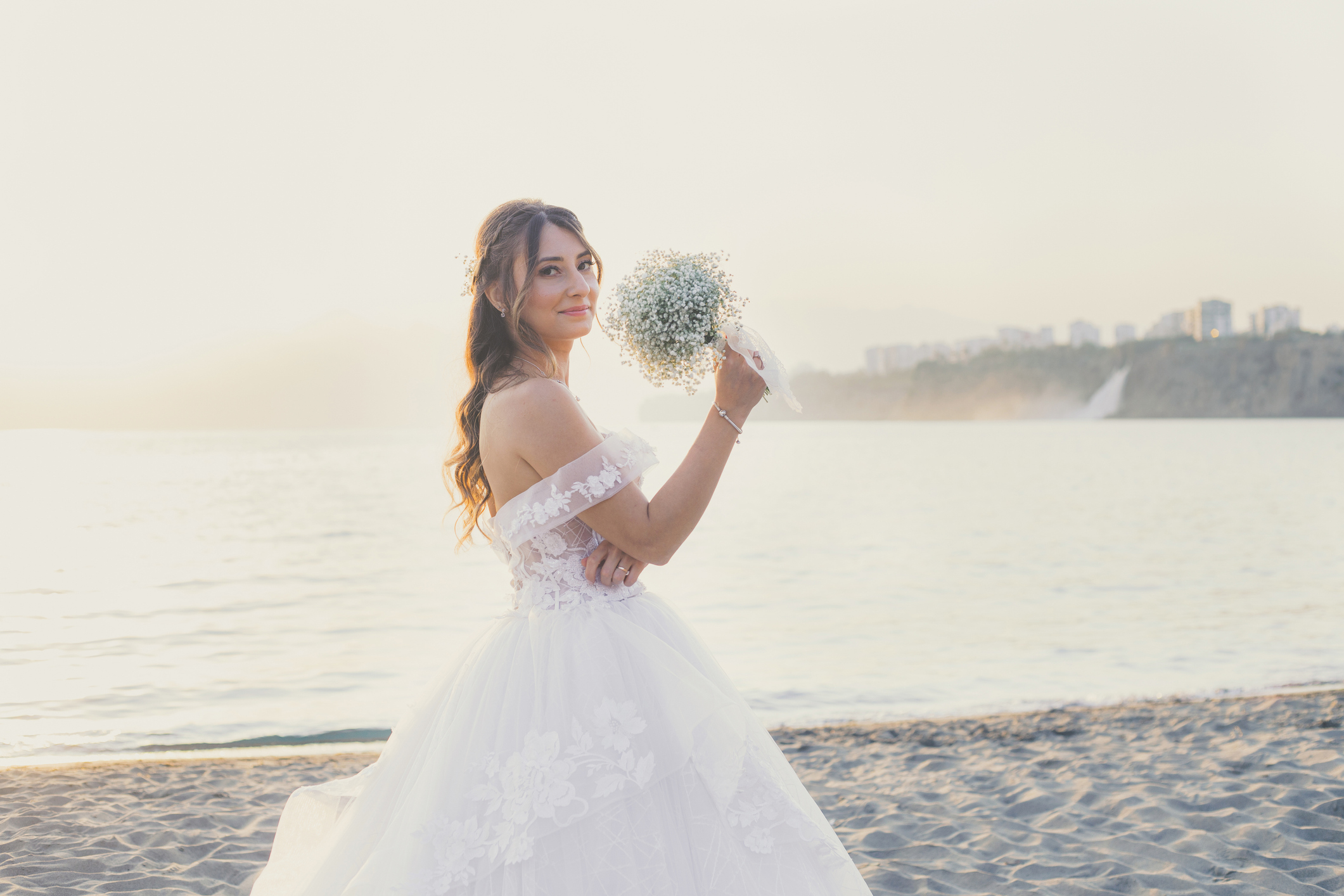
Choosing the right wedding dress is one of the most exciting parts of planning a wedding, but it can also feel overwhelming. With so many styles, fabrics, and designers to choose from, the process might leave you wondering where to start. Here’s a guide to help you navigate your options and find the dress that feels just right for your big day.
1. Define Your Wedding Style
Your dress should align with the overall theme and style of your wedding. A formal ballroom affair might call for a classic ball gown or an elegant sheath dress, while a beach wedding could lend itself to something more flowy and relaxed. Consider the setting, season, and level of formality when choosing your dress style. Knowing your venue and wedding aesthetic can help narrow down your choices significantly.
2. Set a Realistic Budget
Wedding dresses come in a wide range of prices, so setting a realistic budget before shopping is crucial. Keep in mind that alterations, accessories, and potential customizations will add to the overall cost. By establishing a budget early, you can focus on dresses within your price range, which will save you time and keep you from falling in love with a gown that’s out of reach.
3. Understand Your Body Type and Style Preferences
Each bride has a unique body shape, and different dress silhouettes flatter different figures. Here’s a quick guide to help match dress styles with body types:
- A-Line: Universally flattering, with a fitted bodice and flared skirt. Great for all body types.
- Ball Gown: Adds drama with a fitted bodice and full skirt, perfect for a princess look. Works well for pear shapes and brides looking to enhance their waistline.
- Sheath: A slim, body-hugging silhouette ideal for petite frames and brides who want a modern, minimalistic look.
- Mermaid/Trumpet: Highlights curves with a fitted bodice and flare at the knees. Ideal for hourglass figures but can also work well for slender or athletic shapes.
If you’re unsure about what will look best, try on a variety of styles to see what feels most flattering and comfortable.
4. Research Fabrics and Consider Comfort
Fabric can dramatically impact the look and feel of your dress. Lighter fabrics like chiffon and organza work well for summer weddings, while heavier materials like satin or velvet might be more suitable for cooler months. Keep comfort in mind as well; if you plan on dancing or moving around a lot, consider a dress that allows easy movement. The right fabric will add to the elegance of your dress while ensuring you feel your best all day.
5. Start Shopping Early, but Not Too Early
It’s a good idea to start shopping 8-12 months before the wedding, as some dresses can take months to be made and delivered. If you begin shopping too early, your preferences might change over time, or you may find a dress you like even more closer to the date. Most bridal shops suggest ordering your dress 6-9 months in advance to allow time for fittings and alterations.
6. Limit Your Entourage
While it’s fun to share this experience with friends and family, too many opinions can be overwhelming. Limit your shopping entourage to a select few who understand your vision and can offer supportive, honest feedback. Many brides find it helpful to bring their mom, maid of honor, or a close friend whose opinion they trust.
7. Keep an Open Mind
Many brides have a specific idea of their “perfect” dress, only to fall in love with something entirely different once they start trying on gowns. Be open to trying a few styles outside your comfort zone—sometimes, the dress you least expect ends up being “the one.” Trust your bridal consultant; they have experience and may suggest styles you hadn’t considered.
8. Think About the Little Details
The details on a dress, like lace, beading, embroidery, or applique, can transform it into a one-of-a-kind masterpiece. Think about what embellishments appeal to you and how they’ll complement your wedding theme. Be careful not to overdo it; sometimes, a simple dress with minimal embellishments can make the biggest impact, especially when accessorized with a beautiful veil or statement jewelry.
9. Factor in Alterations and Customizations
Most brides need at least two to three fittings to get the perfect fit, so factor these costs and appointments into your timeline and budget. Alterations can make a huge difference in how the dress fits and feels. Some brides also choose to add customizations, like sleeves, extra beading, or unique necklines, to make their dress feel more personal.
10. Trust Your Instincts
At the end of the day, the right dress should make you feel confident, beautiful, and like yourself. You may have to try on a few different dresses to find “the one,” but when you do, you’ll know. Don’t let others’ opinions sway you from the dress that feels perfect to you. Your wedding day is about celebrating your love, and the dress you choose should make you feel comfortable, radiant, and ready to walk down the aisle.
Final Thoughts
Choosing a wedding dress is an intimate, personal journey, and it’s okay to take your time. With a little planning, self-awareness, and an open mind, you’re sure to find a dress that captures the essence of your style and makes you feel incredible on your special day.
